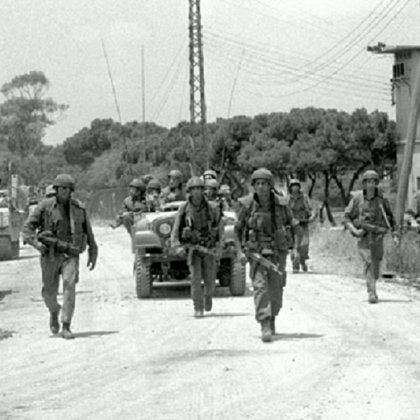THE LEBANESE CIVIL WAR (1975-1990) , ISRAELI TANKS ROLLED ACROSS THEIR BORDER INTO NEIGHBORING LEBANON ON JUNE 6,1982,GENERAL ARIEL SHARON LEAD THE ATTACK.
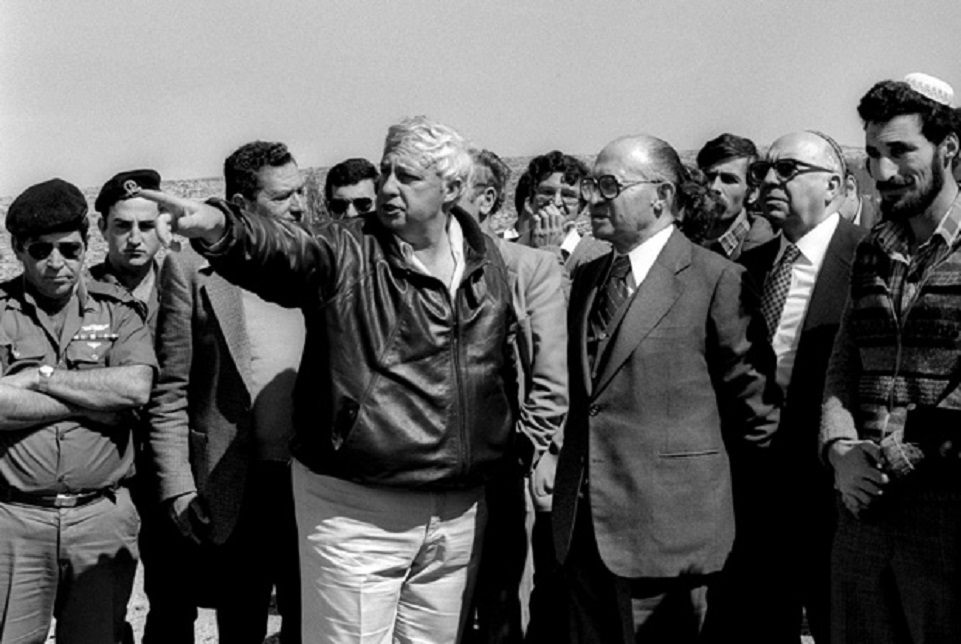 Under Sharon's command,during the Lebanon war in 1982, Sharon was a former army general then serving as Israeli defense minister was held indirectly responsible by an Israeli inquiry in the 1983 massacre of Palestinians by a Lebanese Christian military at the Sabra and Shatila refugee camps.The inquiry which led to Sharon's prompt resignation -- found he did nothing to stop Christian militiamen allied with Israel from entering the camps, despite fears they might seek to avenge the killing of their leader the previous day.Many in the Arab world dubbed Sharon "the Butcher of Beirut," and
Palestinians attempted to bring war crimes charges against him in
European courts.
Under Sharon's command,during the Lebanon war in 1982, Sharon was a former army general then serving as Israeli defense minister was held indirectly responsible by an Israeli inquiry in the 1983 massacre of Palestinians by a Lebanese Christian military at the Sabra and Shatila refugee camps.The inquiry which led to Sharon's prompt resignation -- found he did nothing to stop Christian militiamen allied with Israel from entering the camps, despite fears they might seek to avenge the killing of their leader the previous day.Many in the Arab world dubbed Sharon "the Butcher of Beirut," and
Palestinians attempted to bring war crimes charges against him in
European courts.
June 6, 1982: Israel invades Lebanon again. Gen. Ariel Sharon leads the attack. The two-month drive leads the Israeli army to the southern suburbs of Beirut. The Red Cross estimates the invasion costs the lives of some 18,000 people, mostly civilian Lebanese.With Egypt a treaty partner and Syria and Jordan quiet, Israel turned its attention to the Palestinian guerrillas. Many of them had grouped in Lebanon after being expelled from Jordan by King Hussein, and began attacking Israel from there.The Palestinians, led by Yasser Arafat and his Palestine Liberation Organisation, would not recognise Israel and Israel would not support a Palestinian state.In 1982, Prime Minister Begin launched "Operation Peace for Galilee", which was an invasion of Lebanon, taking the Israelis right up to and into Beirut.Yasser Arafat and his fighters were forced to depart for Tunisia. But the operation went wrong for Israel. It was condemned by world - and much of its own - opinion when Christian fighters massacred hundreds of Palestinian civilians as the Israeli army stood by, and it failed to make a political agreement with the Christians stick. It pulled back to an enclave north of their border.When IDF ground forces crossed into Lebanon on June 6, five divisions and two reinforced brigade-size units conducted the three-pronged attack.The PLO was the only group to resist the IDF advance. Although many PLO officers fled, abandoning their men, the Palestinian resistance proved tenacious. In house-to-house and hand-to-hand combat in the sprawling refugee camps near Tyre and Sidon, the Palestinians inflicted high casualties on the IDF. The IDF was on the verge of a breakthrough when, on June 11, Israel bowed to political pressure and agreed to a truce under United States auspices.The cease-fire signaled the start of a new stage in the war, as Israel focused on PLO forces trapped in Beirut... Israel maintained the siege of Beirut for seventy days, unleashing a relentless barrage of air, naval, and artillery bombardment... Arafat had threatened to turn Beirut into a 'second Stalingrad,' to fight the IDF to the last man. His negotiating stance grew tenuous, however, after Lebanese leaders, who had previously expressed solidarity with the PLO, petitioned him to abandon Beirut to spare the civilian population further suffering.Arafat's condition for withdrawal was that a multinational peacekeeping force be deployed to protect the Palestinian families left behind. Syria and Tunisia agreed to host departing PLO fighters. An advance unit of the Multinational Force, 350 French troops, arrived in Beirut on August 11, followed within one week by a contingent of 800 United States marines. By September 1, approximately 8,000 Palestinian guerrillas, 2,600 PLA regulars, and 3,600 Syrian troops had evacuated West Beirut.Taking stock of the war's toll, Israel announced the death of 344 of its soldiers and the wounding of more than 2,000. Israel calculated that hundreds of Syrian soldiers had been killed and more than 1,000 wounded, and that 1,000 Palestinian guerrillas had been killed and 7,000 captured. By Lebanese estimates, 17,825 Lebanese had died and more than 30,000 had been wounded. In July 1981 the US negotiated a ceasefire between Israel and the PLO. The ceasefire was violated one year later, on June 3, 1982, when a gunman affiliated with the Ahmed Jibril movement tried to assassinate Shlomo Argov, the Israeli ambassador to London. Argov suffered a serious head injury. Then-Prime Minister Menachem Begin called a special cabinet meeting following the attempt on Argov's life. The meeting ended with the cabinet voting in favor of striking targets in Beirut and southern Lebanon. The PLO responded with massive shelling on Israel’s northern communities.IDF forces marched into Lebanon on June 6, 1982 as the government announced that Israel’s objective was to push the armed groups northward, thus ensuring the northern Israeli communities were safely out of fire range. The operation was meant to be no more than 48 hours long, reaching 25 miles into Lebanon. IDF forces, however, ended up reaching the outskirts of Beirut. As Israeli forces pressed northward, Syrian forces launched an offensive in eastern Lebanon. A clash proved unavoidable as Damascus sent reinforcements to the Bekaa Valley and launched an attack against IDF troops; but the Israel Air Force destroyed most of Syria’s missiles batteries in Lebanon, shooting down 27 Syrian fighter jets in the process. Syria ended up losing about 100 jets in the fighting.By June 14, IDF forces were surrounding Beirut. Joined by Christian Phalanges in the eastern sector of the city, the plan was to impose a "new order” in Lebanon: Israel was to help Lebanon become free of Syrian and Palestinian influences, thus securing peace for both sides. Seizing Beirut was meant to force the Syrian and PLO forces out of the city. The blockade lasted from July through mid-August, when PLO forces, and Yasser Arafat among them, began leaving the city under the protection of a multinational force on August 25 and was completed five days later.Following a massacre of Palestinian civilians by Christian Phalanges forces at the Sabra and Shatila refugee camps in September 1982, the IDF left western Beirut and a multinational force took its place. The US special envoy to the region, Philip Habib, brokered the withdrawal of all foreign armies from Lebanon – Israel, Syria and the PLO, as well as ceasefire between Israel and Lebanon; but the Lebanese recanted the deal due to Syrian pressure. IDF forces began a graduate withdrawal to the south, suffering mass casualties in the process.On November 4, 1983 the IDF headquarters in Sidon was attacked and 36 soldiers were killed. The multinational force was targeted numerous times as well: On October of 1983 the US and French forces lost 241 and 58 soldiers respectively, and as a result the multinational force essentially ceased to exist. Meanwhile, the Lebanese government inability to enforce its authority resulted in dozens of armed militias roaming free in southern Lebanon; and in continued clashes between the militias and IDF forces.The mass casualties suffered by the IDF led to the Israeli public being heavily divided about the necessity of the war in Lebanon, which was perceived by many as 'elective fighting.' The escapade, which was dubbed 'the Lebanese mess,' eventually led to Begin's decision to resign as PM in August of 1983.January of 1985 saw the Israeli government decide to gradually withdraw from Lebanon, and by springtime most of the IDF's troops – with the exception of those stationed in the south Lebanese buffer zone – were out of Lebanon. According to the Defense Ministry, Israel suffered 1217 fatalities in the war itself, which lasted between 1982 and 1985."

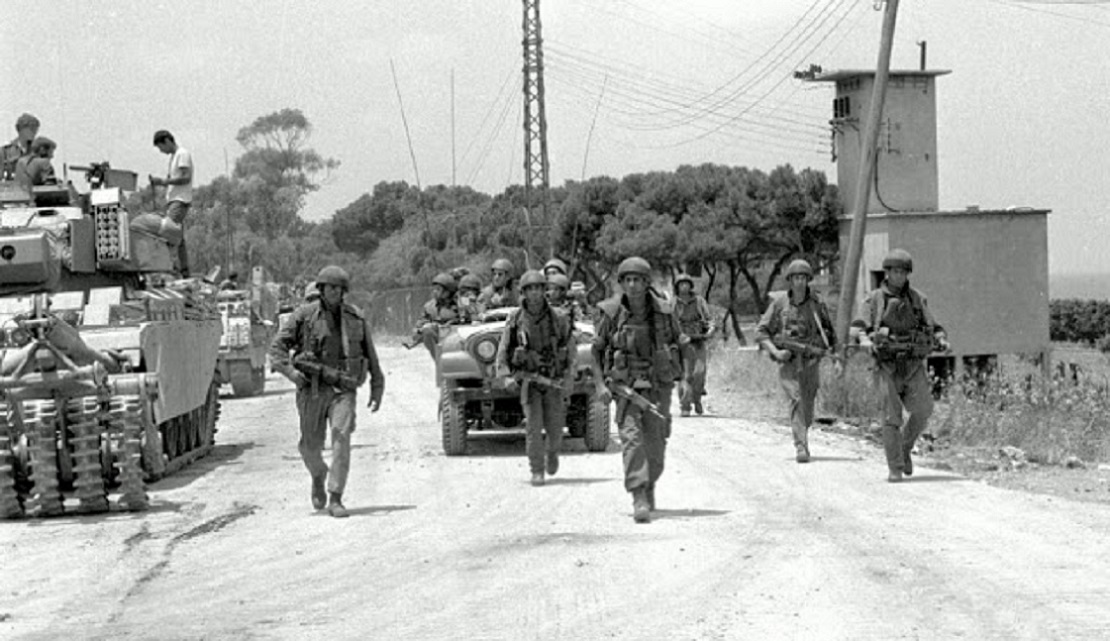
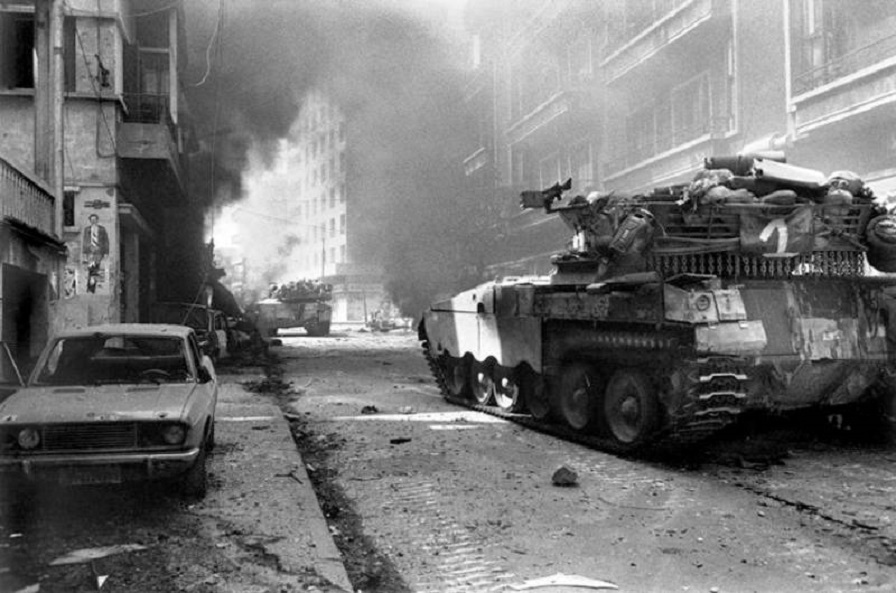 In June 1982, Israeli tanks rolled across their border into neighboring Lebanon. Their mission was to stop the Palestine Liberation Organization from repeating further attacks on Israeli officials and civilians.When the Israel Defense Forces (IDF) invaded southern Lebanon, after repeated attacks and counter-attacks between the Palestine Liberation Organization (PLO) operating in southern Lebanon and the IDF that had caused civilian casualties on both sides of the border.The military operation was launched after gunmen from Abu Nidal's organization attempted to assassinate Shlomo Argov, Israel's ambassador to the United Kingdom. Israeli Prime Minister Menachem Begin blamed Abu Nidal's enemy, the PLO, for the incident,and treated the incident as a casus belli for the invasion
In June 1982, Israeli tanks rolled across their border into neighboring Lebanon. Their mission was to stop the Palestine Liberation Organization from repeating further attacks on Israeli officials and civilians.When the Israel Defense Forces (IDF) invaded southern Lebanon, after repeated attacks and counter-attacks between the Palestine Liberation Organization (PLO) operating in southern Lebanon and the IDF that had caused civilian casualties on both sides of the border.The military operation was launched after gunmen from Abu Nidal's organization attempted to assassinate Shlomo Argov, Israel's ambassador to the United Kingdom. Israeli Prime Minister Menachem Begin blamed Abu Nidal's enemy, the PLO, for the incident,and treated the incident as a casus belli for the invasion
The catalyst for invasion was provided in an unexpected site. On June 3, 1982, the De La Rue Group, a British printing and publishing conglomerate, held a banquet at London's Dorchester Hotel. The 400 guests included industrialists and several ambassadors. One of the latter was Shlomo Argov of Israel. When the banquet ended, Argov left the hotel shortly before 11:00 p.m. A young Palestinian, Hassan Said, carrying a shoulder bag, had been loitering on the street outside for nearly an hour. As the [Israeli] ambassador entered his limousine, Said removed a submachine gun from the bag and fired one shot from a distance of 15 feet. Argov was struck in the head and collapsed.The following day, the Israeli air force began a massive bombardment of PLO [Palestine Liberation Organization] targets in Lebanon, battering arms depots and military camps beyond the Red Line [Awali River below which Syrian troops were not to go] the entire distance up to Beirut...In the absence of Arafat, who had departed for Baghdad several days earlier to offer his mediation services in the Iraq-Iran War, the reaction of individual PLO factions was to launch a sporadic shelling of Israeli settlements in the Galilee. There were several casualties and heavy property damage.At an emergency [Israeli] cabinet meeting of June 5 [1982], he [Arial Sharon, Israeli Defense Minister] and [Israeli Prime Minister] Begin insisted that the army would have to strike immediately to activate a long-prepared strategy of clearing a 25-mile strip along the Lebanese border. If this were accomplished, the PLO's artillery would be pushed decisively beyond range of Israel's northern settlements.The cabinet then gave its approval.At the outset, on June 6, 1982, three Israeli divisions closed in on the Palestinians in Lebanon from all sides: by direct advance along the coastal road; by amphibious forces landed between Sidon and Damour; then by a division sent into the central sector, through the Shouf mountains. The unfolding offensive was envisaged as a classic pincer movement that would encircle south Lebanon, and strike across to the coast.After a week of war, Israel's army was in effective occupation of southern Lebanon. Its tanks and self-propelled guns surrounded Beirut, trapping some 15,000 Palestinian guerrillas intermingled in the western part of the city among a half-million local Moslems.During the ensuing two months [June & July], some 400 Israeli tanks and 1,000 guns poured salvo after salvo into West Beirut... As [Israeli Defense Minister] Sharon had hoped, the pulverizing seige rapidly became unendurable for the Palestinian guerrillas. In late June, through [U.S. Ambassador] Philip Habib and other intermediaries, Arafat let it be known that he was prepared to withdraw his men from the city."By the mid-1970s, the arrangements worked out for Lebanon after the 1958 intervention – a strengthened army to go along with U.S. economic and political assistance – had been overtaken by demographic changes and a large Palestinian presence. A brutal civil war broke out, ratcheted down to lower levels only when, with U.S. support, the Maronite-dominated regime invited in the Syrians to restore order. The situation remained unchanged through the early 1980s, the U.S. continuing to back the government with various kinds of resource transfers. But in the summer of 1982, Israel , for the second time in four years, invaded Lebanon , advancing toward Beirut and aiming to destroy or at least expel the forces of the Palestinian Liberation Organization (PLO). As Israeli troops moved north, the U.S. , as it had done in similar situations for decades, sent a detachment of marines to evacuate U.S. citizens. Soon after, however, the same marine unit returned as part of an arrranged multinational force (MNF), whose mission was to evacuate the PLO from Beirut and, during that time, to occupy parts of Beirut together with the Lebanese Armed Forces (LAF). This mission, which lasted for three weeks, was without incident, as was in fact anticipated by the marine commander, who told reporters, “I am not anticipating any need for us to use our weapons.” Within a week after the marines redeployed to their ships, a series of events, including the assassination of the country's new president and a partly retaliatory massacre of Palestinian refugees, led U.S. policy makers to order the same marine units back to Beirut . Once again they would be part of an MNF, but this time their mandate was twofold: to serve as ”an interposition force” (between whom was not specified) and to “assist” the Lebanese Government and the LAF “in the Beirut area.” Some 1,200 marines (their number would eventually grow to 1,800) thus took up positions around the Beirut airport with extremely restrictive rules of engagement; the thought was that their mere presence would be enough to deter combat anywhere in the area. Soon after the marines had reestablished themselves, the new Lebanon president visited Washington and asked for the MNF to be expanded sufficiently to provide security throughout the country. In light of the large number of non-Lebanese troops outside of Beirut , this was considered a nonstarter unless they could be persuaded to leave peacefully, so the U.S. began negotiations in this direction, while also working “to rebuild the Lebanese security forces” and “improve the Lebanese Government's ability to assume its responsibilities as quickly as possible.” Thus, the marines began training and equipping the LAF while also beginning motorized patrols in Beirut and surrounding areas. The U.S. also arranged an agreement between Lebanon and Israel ending the state of war and providing for Israeli troop withdrawal, contingent on Syrian and Palestinian withdrawal. By the summer of 1983, it was clear that the negotiation and training components of U.S. policy had failed. The U.S. embassy had been bombed in the spring, probably a reaction to (unsuccessful) U.S. pressures on Syria . The LAF remained at a low level of competence and was seen as incapable of extending control outside of Beirut (in Beirut, it was the MNF which patrolled). Then the marines began to be attacked. The U.S. changed the rules of engagement to permit “aggressive self-defense” (including on behalf of other MNF contingents) and responded by naval bombardment and by launching fighter jets to warn against further escalation. In the meantime, the Israelis had withdrawn from the mountains overlooking Beirut . Although the marine commander proposed occupying those positions, on the grounds that the LAF was incompetent and that Lebanese anti-government forces would avoid ground combat with the U.S., a troop deployment was considered undesirable (both the Europeans and Congress were strongly against) and unnecessary. Instead, Reagan authorized “naval gun fire support and, if deemed necessary, tactical air strikes” in support of LAF operations in the mountains; ordered increased numbers of ships and Marines to the coast of Lebanon (this was described as “a marker for the Syrians”); and intensified diplomatic pressure on Syria .


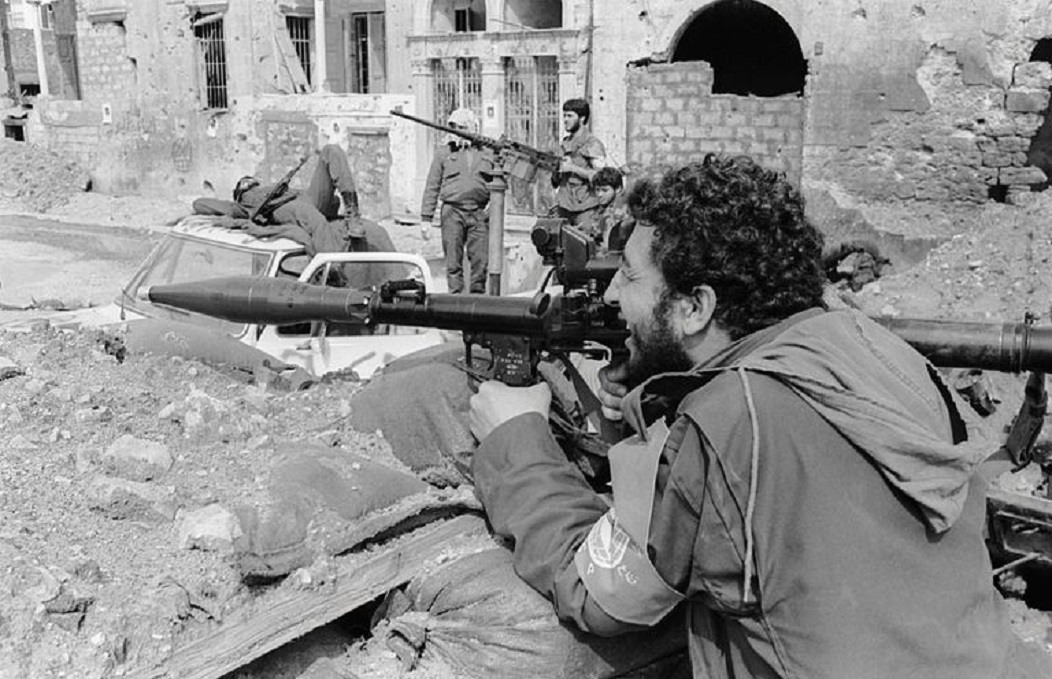 The Lebanese civil war took place from 1975 to 1990 and claimed the lives of some 200,000 people which left Lebanon in ruins.Lebanon suffers heavy casualties from seven years of civil war and Israel's invasion.The Lebanese Civil War in 1975, which ended in 1990 with lives lost, bodies injured permanently, families displaced and a country overturned.
The Lebanese civil war took place from 1975 to 1990 and claimed the lives of some 200,000 people which left Lebanon in ruins.Lebanon suffers heavy casualties from seven years of civil war and Israel's invasion.The Lebanese Civil War in 1975, which ended in 1990 with lives lost, bodies injured permanently, families displaced and a country overturned.
Israel-Hezbollah war 2006.In Lebanon, the last household waste processing centre stopped working on July 17. The country has been buried in tons of rubbish for weeks. Parents are worried about mounds of waste in front of schools that could put their children’s health at risk. On November 25, a big bonfire of rubbish blocked the highway between Jounieh and Ghazir, whilst the heat of the flames damaged the foundations of the Maameltein bridge. Every day, daily newspaper Orient le Jour publishes an article denouncing the “saboteurs of the Republic”, politicians who don’t care if they wreck the State institutions and put the health of their citizens at risk.The rubbish crisis is a metaphor for Lebanon, which is no better at managing its household waste than its civil war past, just as its present is also fraught with dangers. For nearly five years, Iraq and Syria have been mired in war, the Israeli-Palestinian conflict continues and now Yemen too is in conflict. The ghost of civil war haunts Lebanon, especially after the double suicide bombing on November 12 which left 43 dead and 250 wounded in Bourj El-Barajneh, a Hezbollah stronghold in Beirut. The United Nations Interim Force in Lebanon, or UNIFIL, was created by the United Nations, by Security Council Resolution 425 and 426 on 19 March 1978. UNIFIL objective was to confirm Israeli withdrawal from Lebanon, to restore international peace and security, and to help the Lebanese Government restore effective authority in the area.The first UNIFIL troops to arrive in the area on 23 March 1978 were reassigned from other UN peacekeeping operations in the area (namely UNEF and UNDOF).During the 1982 Lebanon War, U.N. positions were overrun, primarily by the South Lebanon Army forces under Major Saad Haddad. These were the indigenous Lebanese forces supported by the IDF.[2] During the occupation, UNIFIL's function was mainly to provide humanitarian aid.In 1999, Israel undertook a full withdrawal, which concluded in 2000 and enabled UNIFIL to resume its military tasks. The UN Security Council has extended UNIFIL's mandate until August 31, 2006.UNIFIL's function was mainly the provision of food and aid to locals in Southern Lebanon. In 1999, Israel undertook a full withdrawal, which concluded in 2000 and enabled UNIFIL to resume its military tasks. At Lebanon' request, in January 2006 the UN extended UNIFIL's mandate to expire 31 July 2006.The United Nations Interim Force in Lebanon UNIFIL and also known as the UN, is a demilitarized zone that was created by the United Nations, with the adoption of Security Council Resolution 425 and 426 on 19 March 1978, to confirm Israeli withdrawal from Lebanon which Israel had invaded five days prior, restore international peace and security, and help the Government of Lebanon restore its effective authority in the area.The mandate had to be adjusted twice, due to the Israeli invasion of Lebanon in 1982 and after the Israeli withdrawal from Lebanon in 2000.Following the 2006 Lebanon War, the United Nations Security Council enhanced UNIFIL and decided that in addition to the original mandate, it would, among other things, monitor the cessation of hostilities; accompany and support the Lebanese Armed Forces as they deploy throughout the south of Lebanon; and extend its assistance to help ensure humanitarian access to civilian populations and the voluntary and safe return of displaced persons.On 24 June 2007, six UNIFIL soldiers (three Colombians and three Spanish) were killed after their vehicle was hit by an explosive device; two others (both Spanish) were injured in the incident. No group has yet admitted responsibility. The Israeli military believed the attack to be the work of al-Qaeda/Global Jihad members.The Israeli Ambassador to the UN, Ambassador Dan Gillerman, met with UNIFIL commander, Maj.-Gen. Claudio Graziano, on 15 August 2008, after Israel was accused of unilaterally violating United Nations Security Council Resolution 1701 by the almost daily overflights of Lebanese airspace, the continued occupation of the village of Ghajar, and Israel's refusal to submit maps of areas on which it dropped cluster munitions during the 2006 Lebanese war.Following the war, British military historian John Keegan predicted that Israel would in the future invade Lebanon and continue attacking until Hezbollah's system of tunnels and bunkers was completely destroyed, as Israel would not tolerate a "zone of invulnerability" occupied by a sworn enemy, or a double threat posed by Hezbollah and Hamas rockets, and that Israel might first attack the Gaza Strip. Keegan noted that any IDF entry into Southern Lebanon would risk provoking a clash with UNIFIL, but that it is unlikely to deter Israel, as it tends to behave with "extreme ruthlessness" when national survival is at stake.In 2010, a series of standoffs and clashes erupted between UNIFIL troops and Lebanese villagers in the border region. Villagers accused French peacekeepers of provocative and intrusive patrols, and of taking pictures of people inside their homes. People of Aitaroun town, Marjayoun, accused the French regiments of driving their heavy vehicles through their two-month-old tobacco fields, which support many families. UNIFIL was also accused of having stepped up its patrols and of failing to coordinate with the Lebanese Army. In July 2010, the most serious incident occurred when the French regiments decided to carry out exercises unilaterally, without Lebanese units or other regiments. When they went into narrow alleys of Lebanese villages some residents first tried to redirect them out of their private areas. The French fired against the civilians, arrested a youth driving a motorcycle, and destroyed the vehicle. When other civilians saw that, they surrounded and attacked the UNIFIL French troops without any weapons. The vehicles' windows were smashed by stones from dozens of civilians of all ages, and the French commander was wounded. The French troops were forcibly disarmed by the villagers, and weapons were then handed over to the Lebanese Army. The French unit could not explain why they behaved unilaterally. Their ambassador to the UN said the civilian attack "was not spontaneous". Many troops, including the Finnish, Irish, Qataris and Indonesians pulled out of UNIFIL in 2007–2008. One reason quoted as some were there for over 30 years (the Irish and Finnish) because of fear of change of the rules of engagement by the NATO forces joining after August 2006 and because of German and French high level statements expressing unlimited support to the Israeli side.[citation needed] At the request of the United Nations, 7,000 additional Lebanese soldiers were deployed to South Lebanon as approved by the Lebanese Cabinet.How can the current challenges be met whilst the State has put an iron cover on the past? Lessons have never been drawn from the 1975-1990 war which killed some 140,000 people.
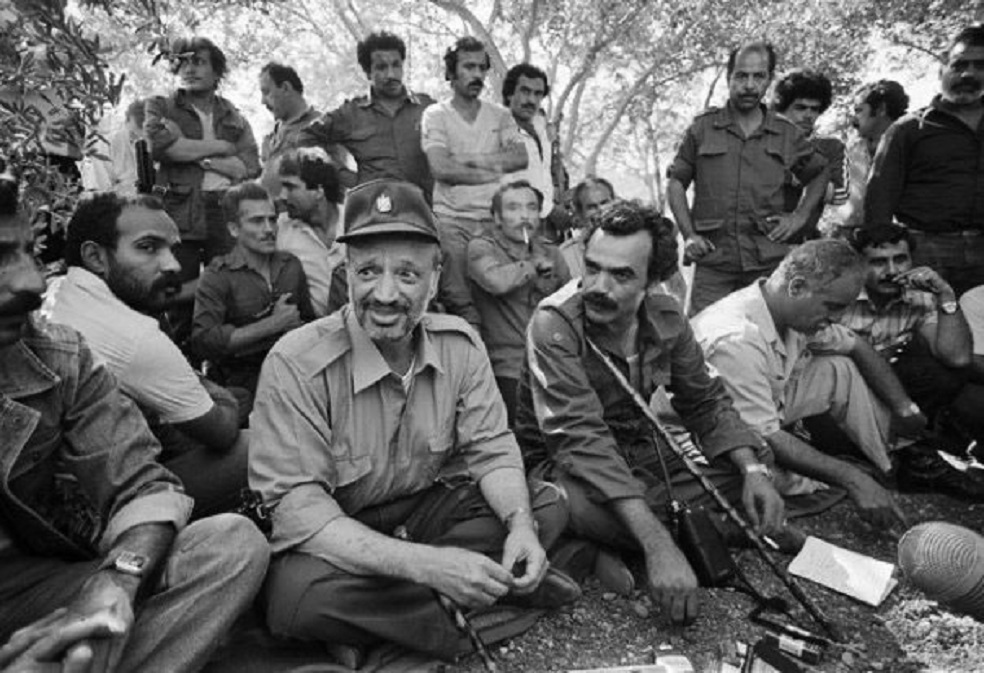

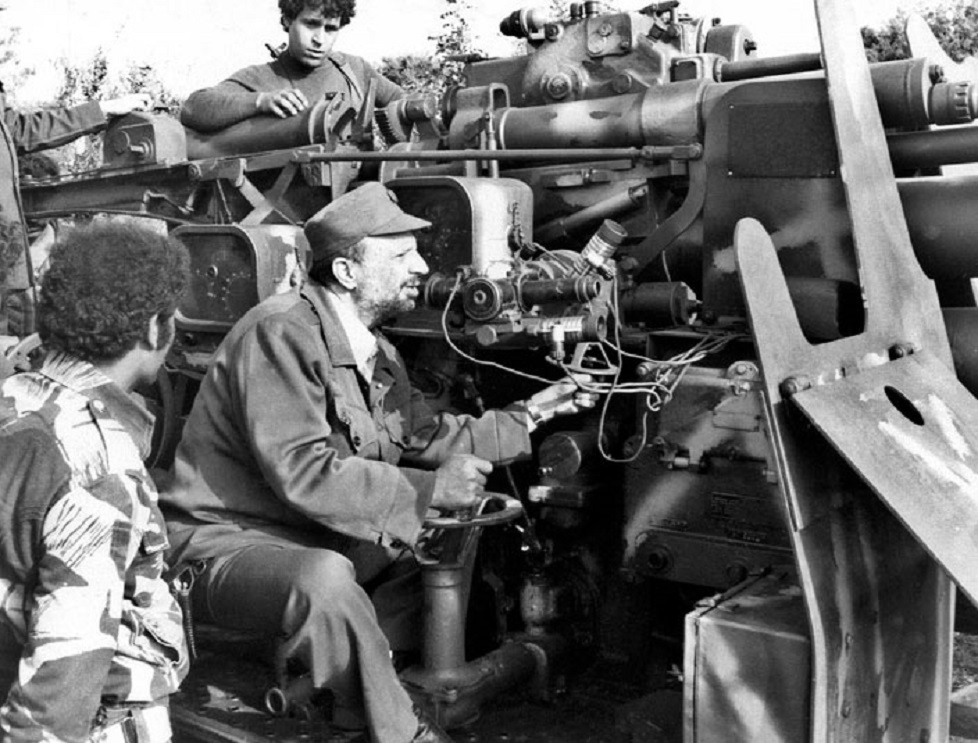 Palestinian leader Yasser Arafat greets one of his supporters in Beirut during the early days of the 1982 Israeli invasion of Lebanon. Arafat, the embodiment of Palestinian aspirations. The Palestinian insurgency in South Lebanon was a conflict initiated by Palestinian militants based in South Lebanon upon Israel since 1968, which evolved into the wider Lebanese Civil War in 1975 and lasted until the expulsion of the Palestinian Liberation Organization from Lebanon in the 1982 Lebanon War.
Palestinian leader Yasser Arafat greets one of his supporters in Beirut during the early days of the 1982 Israeli invasion of Lebanon. Arafat, the embodiment of Palestinian aspirations. The Palestinian insurgency in South Lebanon was a conflict initiated by Palestinian militants based in South Lebanon upon Israel since 1968, which evolved into the wider Lebanese Civil War in 1975 and lasted until the expulsion of the Palestinian Liberation Organization from Lebanon in the 1982 Lebanon War.
